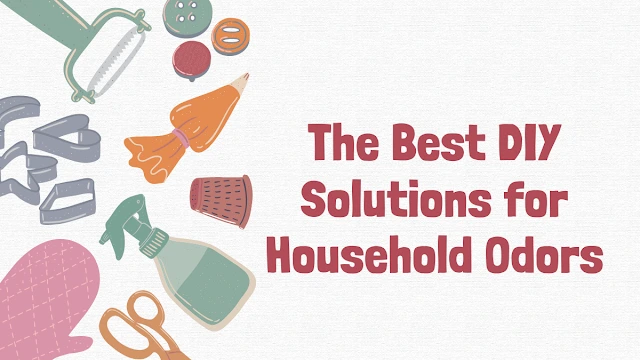
Keeping your home fresh and clean is crucial for maintaining comfort and promoting good health. However, many conventional methods involve the use of harmful chemicals and result in significant waste, which can have a negative impact on the environment. If you’re looking to create a greener living space, there are plenty of eco-friendly alternatives available. This guide will walk you through various simple, sustainable ways to freshen up your home without harming the planet.
Embrace Natural Air Fresheners
Store-bought air fresheners often contain synthetic chemicals that can contribute to indoor air pollution and may have adverse effects on your health. Fortunately, there are natural alternatives that are just as effective at keeping your home smelling fresh.
Essential Oils
Essential oils are a wonderful natural option for freshening the air in your home. Scents like lavender, lemon, eucalyptus, and peppermint are not only pleasant but also have various therapeutic properties. To use them, you can add a few drops to a diffuser to disperse the scent throughout a room. Alternatively, you can make a simple air freshener by mixing a few drops of essential oil with water in a spray bottle and lightly misting the air or fabrics. This method is chemical-free and customizable to your scent preferences.
Simmering Pots
Creating a simmering pot is another simple and natural way to infuse your home with delightful aromas. By simmering a pot of water with ingredients like cinnamon sticks, citrus peels, cloves, or herbs, you can fill your home with a warm, inviting scent. This method is particularly popular during the colder months when the comforting aroma of spices and fruits can enhance the cozy atmosphere of your home. Plus, it’s an excellent way to use up kitchen scraps that might otherwise go to waste.
DIY Potpourri
Potpourri is a classic way to add a pleasant fragrance to your home, and making your own is easier than you might think. You can create potpourri using dried flowers, herbs, and spices that you already have on hand. For example, dried rose petals, lavender buds, and citrus peels can be combined with cinnamon sticks and cloves to create a beautiful and fragrant blend. Place your homemade potpourri in decorative bowls around your home to enjoy a continuous, natural fragrance. It’s also a great way to repurpose dried flowers that would otherwise be discarded.
Keep Indoor Plants
Indoor plants do more than just add visual appeal to your home; they also play a significant role in improving air quality and creating a more relaxing environment.
Air-Purifying Plants
Certain indoor plants are known for their ability to purify the air by absorbing toxins and releasing oxygen. Plants like snake plants, spider plants, and peace lilies are particularly effective at filtering out common pollutants such as formaldehyde, benzene, and xylene. Incorporating these plants into your home can help create a cleaner and healthier indoor environment. Plus, they require minimal care, making them ideal for busy individuals or those new to plant care.
Aromatic Plants
In addition to air-purifying plants, consider adding aromatic plants to your home. Plants like mint, lavender, and rosemary not only look beautiful but also release natural fragrances that can freshen up your living spaces. These plants are easy to grow and can be placed in various locations around your home, such as the kitchen, bathroom, or living room. The subtle scent they release can help uplift your mood and create a calming atmosphere.
Low-Maintenance Options
If you’re concerned about the maintenance of indoor plants, opt for low-maintenance varieties that thrive with minimal attention. Succulents, cacti, and aloe vera are great options for those who may not have a green thumb. These plants require little water and care but still provide the benefits of improved air quality and a touch of nature in your home. Additionally, aloe vera has the added benefit of being useful for soothing skin irritations, making it a practical choice for any home.
Make Your Own Cleaning Products
Many commercial cleaning products contain harsh chemicals that can be harmful to both the environment and your health. By making your own cleaning products, you can control the ingredients and reduce your environmental impact.
Vinegar and Baking Soda
Vinegar and baking soda are two of the most versatile and effective natural cleaners you can use in your home. When combined, they create a powerful cleaning agent that can tackle a variety of tasks. For example, you can use this mixture to clean kitchen countertops, bathroom surfaces, and even to deodorize carpets. The acidity of vinegar cuts through grease and grime, while baking soda acts as a gentle abrasive to scrub away dirt. Additionally, this combination is safe to use around children and pets, making it an ideal choice for families.
Lemon Juice
Lemon juice is another natural cleaning agent that is both effective and environmentally friendly. Its high acidity makes it a natural bleach and disinfectant, perfect for cleaning cutting boards, counters, and bathroom surfaces. The fresh citrus scent it leaves behind is an added bonus, helping to naturally deodorize your home. You can also use lemon juice to remove stains from fabrics and hard surfaces, making it a versatile addition to your cleaning arsenal.
Castile Soap
Castile soap is a plant-based soap that is gentle on both surfaces and the environment. It’s made from natural ingredients like olive oil, making it biodegradable and non-toxic. You can use Castile soap for a variety of cleaning tasks, including washing dishes, mopping floors, and even as a body wash. By mixing Castile soap with water and essential oils, you can create a multi-purpose cleaner that is safe for use throughout your home.
Use Eco-Friendly Candles
Candles are a popular way to create a warm and inviting atmosphere in your home, but many conventional candles are made from paraffin wax, a byproduct of petroleum. Burning these candles can release harmful toxins into the air.
Beeswax Candles
Beeswax candles are a natural and eco-friendly alternative to traditional candles. They are made from the wax produced by bees, which is a renewable resource. Beeswax candles burn longer and cleaner than paraffin candles, and they naturally release a sweet, honey-like scent. Additionally, beeswax candles emit negative ions when burned, which can help to purify the air by trapping pollutants like dust, mold, and pet dander. This makes them an excellent choice for creating a healthier indoor environment.
Soy Candles
Soy candles are another eco-friendly option that is becoming increasingly popular. Made from soybeans, which are a renewable resource, these candles burn cleaner and produce less soot than paraffin candles. Soy candles are also biodegradable and can be scented with natural essential oils, offering a wide range of fragrances without the use of synthetic chemicals. They are available in various styles and sizes, making them a versatile choice for any home.
Avoid Synthetic Fragrances
When selecting candles, it’s important to avoid those that contain synthetic fragrances. These fragrances can contain harmful chemicals that may contribute to indoor air pollution and cause allergic reactions in some individuals. Instead, choose candles that are scented with pure essential oils or naturally derived fragrances. This ensures that your candles are not only eco-friendly but also safe for your health.
Open Your Windows
One of the simplest and most effective ways to freshen up your home is to open your windows regularly. Allowing fresh air to circulate can significantly improve indoor air quality and create a more pleasant living environment.
Ventilation
Proper ventilation is essential for maintaining a healthy home. It helps to remove stale air, reduce humidity, and prevent the buildup of indoor pollutants such as dust, mold spores, and volatile organic compounds (VOCs). Opening your windows for just a few minutes each day can make a big difference, especially in rooms where moisture tends to accumulate, like the kitchen and bathroom. Regular ventilation also helps to prevent the growth of mold and mildew, which can thrive in damp, poorly ventilated spaces.
Natural Light
In addition to improving air quality, opening your windows allows natural light to enter your home. Sunlight has natural disinfecting properties and can help to kill germs and bacteria that may be present on surfaces. Exposure to natural light also has numerous health benefits, including boosting your mood, improving sleep patterns, and increasing your overall sense of well-being. By letting in natural light, you can create a brighter, more inviting atmosphere in your home.
Morning Air
Early morning air is often the freshest and coolest of the day. Consider opening your windows in the morning to let in this clean, crisp air before the day heats up. Morning air can help to refresh your home and start your day on a positive note. If you live in an area with good air quality, taking advantage of the early morning breeze can be a simple and effective way to naturally freshen up your living space.
Adopt Sustainable Cleaning Habits
In addition to using eco-friendly cleaning products, adopting sustainable cleaning habits can further reduce your environmental impact and help you maintain a fresh and clean home.
Use Reusable Cloths
Instead of relying on disposable paper towels, switch to reusable cloths for your cleaning tasks. Microfiber cloths are particularly effective because they are designed to trap dust, dirt, and bacteria without the need for harsh chemicals. These cloths can be washed and reused multiple times, reducing waste and saving money in the long run. Additionally, microfiber cloths are gentle on surfaces, making them ideal for cleaning everything from windows to countertops.
Reduce Water Waste
Being mindful of water usage while cleaning is another important aspect of sustainable living. When washing dishes, mopping floors, or scrubbing surfaces, use only the amount of water necessary for the task at hand. Avoid leaving the tap running continuously, and consider using a bucket or basin to limit water usage. By reducing water waste, you can conserve this precious resource and contribute to a more sustainable household.
Choose Eco-Friendly Brands
When purchasing cleaning products, look for brands that prioritize sustainability and eco-friendliness. Many companies now offer cleaning supplies that are biodegradable, cruelty-free, and packaged in recyclable materials. By supporting these brands, you can reduce your environmental impact and encourage the production of more sustainable products in the market.
Conclusion
Freshening up your home doesn’t have to come at the expense of the environment. By embracing these eco-friendly practices, you can create a clean, pleasant, and sustainable living space. From natural air fresheners and indoor plants to homemade cleaning products and eco-friendly candles, there are numerous ways to keep your home fresh while minimizing your environmental footprint. Incorporating these tips into your daily routine not only benefits the planet but also enhances your overall well-being, making your home a healthier and more enjoyable place to live.
FAQs: Eco-Friendly Freshen Up Your Home
Q: What are some natural alternatives to store-bought air fresheners?
Natural alternatives to store-bought air fresheners include essential oils, simmering pots, and DIY potpourri. Essential oils can be diffused or mixed with water to create a spray. Simmering pots made with ingredients like cinnamon sticks, citrus peels, and herbs can fill your home with a natural fragrance. DIY potpourri using dried flowers, herbs, and spices is another effective and eco-friendly option.
Q: How can I make my own eco-friendly cleaning products?
You can make your own eco-friendly cleaning products using simple ingredients like vinegar, baking soda, lemon juice, and Castile soap. Vinegar and baking soda can be combined to create a powerful cleaner for various surfaces. Lemon juice acts as a natural bleach and disinfectant, while Castile soap is a versatile, plant-based cleaner. These homemade solutions are effective, safe, and environmentally friendly.
Q: What are the benefits of using beeswax or soy candles instead of traditional candles?
Beeswax and soy candles are eco-friendly alternatives to traditional paraffin candles. Beeswax candles burn longer, cleaner, and release negative ions that help purify the air. Soy candles are made from renewable soybeans, burn cleaner, and produce less soot. Both options are biodegradable, and when scented with natural essential oils, they provide a safe, pleasant aroma without harmful chemicals.
Read More
https://cleaningview.ca/eco-friendly-solutions-for-a-cleaner-healthier-home/
Important: The information provided here in the post is for general informational purposes only. It should not be taken as professional or any other type of advice. Always seek the advice of a qualified professional before implementing this information on your own. Thank you!
Add CleaningView To Your Google News Feed



